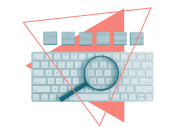Tools Every Modern Web Professional Should Know
✨ Key Points
Master core development tools – Code editors, version control, and front-end frameworks form the foundation for clean, collaborative, and scalable web projects.
Boost efficiency with automation and testing – Build systems, automated tests, and debugging utilities streamline workflows while ensuring quality and performance.
Think beyond code – Design platforms, analytics, SEO resources, and even reliable printers for professional deliverables help web professionals deliver end-to-end results.
Web development has evolved into a multifaceted profession that demands more than just writing code.
Today’s web professionals juggle design, testing, content management, analytics, and even physical deliverables.
The right set of tools can streamline these tasks, improve quality, and make daily work more rewarding. Here are ten essential categories of tools worth exploring.
Code Editors and Integrated Development Environments (IDEs)
A dependable code editor is the foundation of every web project.
Options such as Visual Studio Code, Sublime Text, or WebStorm provide syntax highlighting, auto-completion, and integrated Git support, allowing developers to write cleaner, error-free code and debug projects efficiently.
Version Control and Collaboration Platforms
Version control systems like Git, paired with services such as GitHub or GitLab, help you track changes, manage branches, and collaborate with team members.
Features like pull requests, code reviews, and issue tracking ensure smooth teamwork and safer deployments.
Front-End Frameworks and Component Libraries
Modern frameworks like React, Vue, and Angular enable you to create dynamic, interactive web applications.
Complementary component libraries such as Tailwind CSS or Bootstrap provide pre-styled elements, helping you maintain a consistent look while saving valuable development time.
Browser DevTools and Debugging Utilities
Every major browser offers built-in developer tools that let you inspect elements, monitor network activity, and test performance.
These utilities are essential for identifying layout issues, debugging scripts, and fine-tuning the user experience across different devices.
Testing and Quality Assurance Tools
Automated testing frameworks like Jest, Cypress, or Playwright help catch bugs before they reach production.
Linting tools and code formatters ensure a consistent style, while performance checkers highlight bottlenecks that might slow down your site.
Design, Prototyping, and User Research Tools
Design platforms such as Figma, Sketch, or Adobe XD allow for collaborative prototyping and rapid feedback.
User research and heat-mapping tools provide insight into visitor behaviour, ensuring your design choices are backed by data.
Task Automation and Build Systems
Package managers, bundlers, and automation tools reduce repetitive work.
Whether you use Webpack, Vite, or Gulp, these systems handle tasks like minifying code, optimising images, and streamlining deployment, freeing you to focus on creativity and problem-solving.
Analytics, Monitoring, and SEO Resources
Tracking how visitors interact with your site is crucial for improvement. Analytics platforms reveal traffic patterns, while uptime monitors and SEO tools help maintain site health and discoverability, giving you the information needed to make strategic updates.
Content and Asset Creation Tools
Web professionals often need to create graphics, documents, or print-ready materials.
A reliable printer and quality consumables can be just as important as digital tools.
For example, if you use an HP LaserJet Pro M402DNE printer, choosing high-quality cartridges such as HP LaserJet Pro M402DNE toner ensures crisp, professional results for reports, client proposals, and design proofs.
Learning and Community Resources
Technology moves quickly, so staying informed is key.
Online courses, coding bootcamps, and community forums provide continuous learning opportunities, while documentation generators and internal wikis keep project knowledge organized and accessible.
Final Thoughts
The best toolset is one that fits your workflow and project needs.
By combining reliable development environments, collaborative platforms, design software, and even quality printing solutions, you’ll be well equipped to meet the demands of modern web projects with confidence and creativity.



















